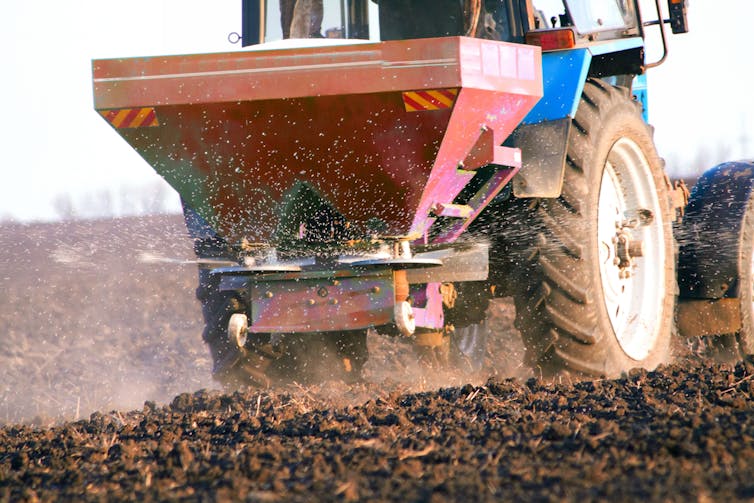Scientists work to solve phosphate shortage – the dwindling resource required to grow food
By 2030, the world’s population is projected to be about 8.5 billion people. Global food security is a major concern for governments – zero hunger is the second most important of the United Nations Sustainable Development Goals.
However, there is a severe conflict between sustainable food production and the use of nonrenewable resources in agricultural systems, particularly phosphate. Phosphorus is a major mineral nutrient required by crop plants for optimal growth and productivity. Phosphate is the only form of phosphorus that plants can absorb — it is often applied to crops as phosphate fertilizer.
Phosphate is obtained through rock mining. Seventy per cent of the world’s phosphate reserves are located in North Africa. China, Russia, South Africa and the United States all have limited quantities of the mineral rock.
Finite resources
Scientists have reported that global phosphate production would peak around 2030, at the same time the global population will reach 8.5 billion people. Several reports have also warned that the global reserve would be depleted within the next 50 to 100 years. Current agricultural practice involves the use of a high amount of phosphate fertilizer in order to achieve optimal plant yield.

This is because of the chemical properties of phosphate, which interacts with soil particlesin a way that makes it difficult for the plant to acquire, leaving a large portion of the element in the soil surface.
Because plants can only uptake small amounts of phosphate, a large majority of fertilizer ends up in unwanted places, like bodies of water, making these practices ecologically and financially unsustainable. It is only reasonable to fathom that as phosphate becomes more expensive and may eventually run out, it not only poses a food security threat, but may also pose political crisis between phosphate rich countries and importing countries.+
…click on the above link to read the rest of the article…